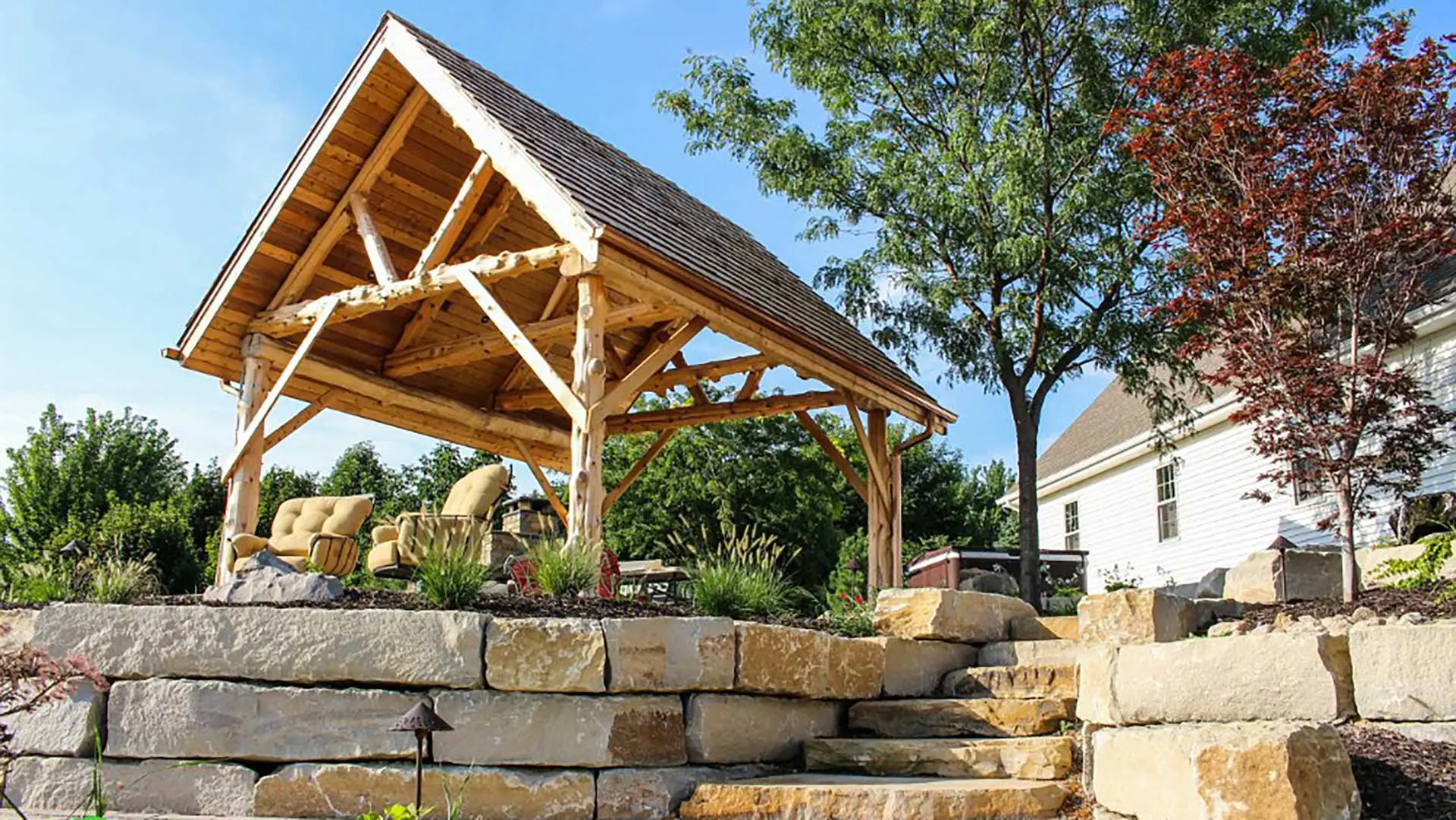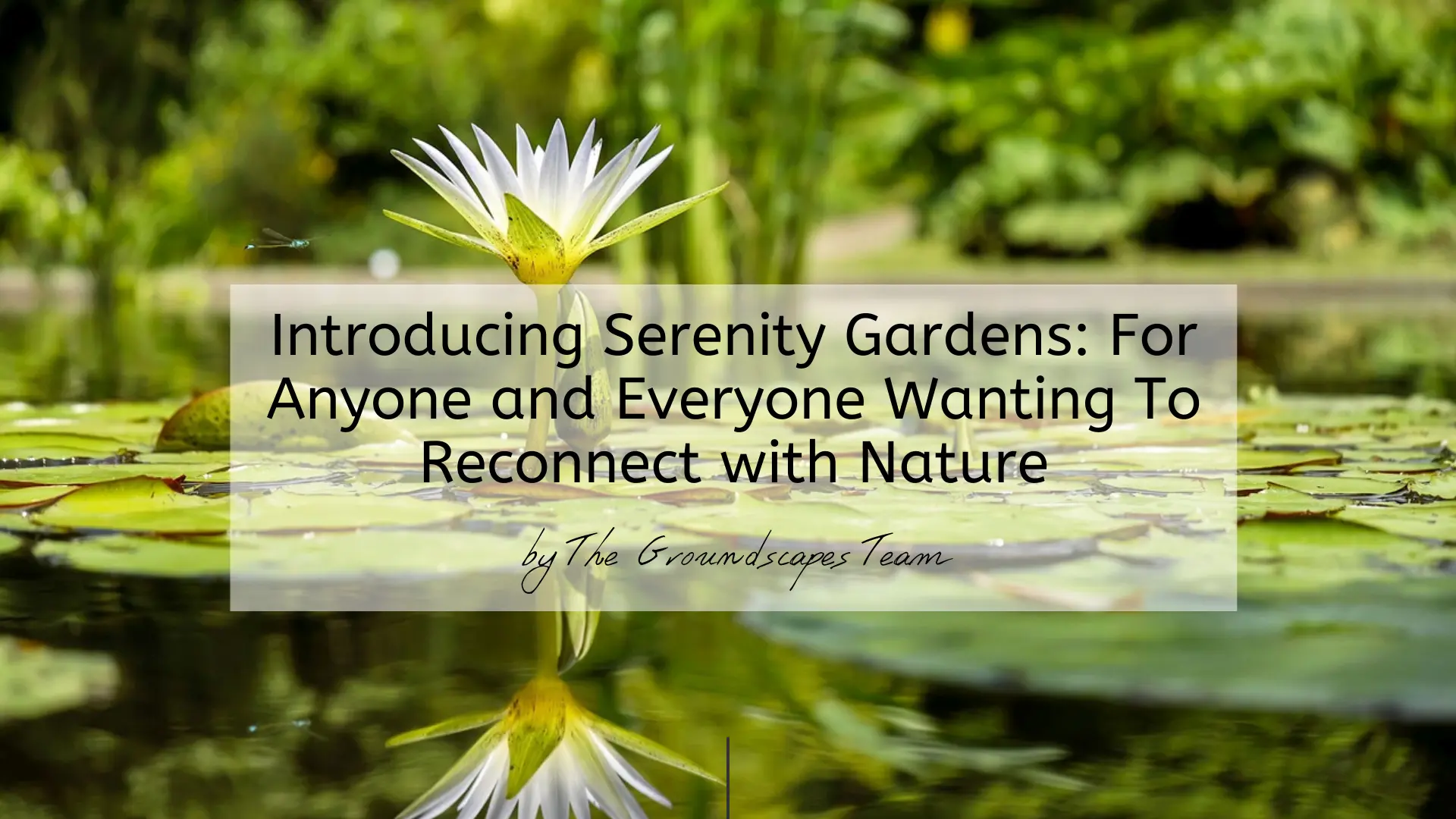It's easy to fall out of touch with nature: from going to work and back, and spending time watching television or on social media you're not alone if you feel disconnected. In fact, researchers at the University of California at Berkeley argue that since the 1950s increased movement into cities and onto the internet has disconnected millions of Americans from nature like never before. The resultant concrete world that we live in, is more stressful, confined, and tiring.
In response to this unfortunate trend, the Groundscapes Team has decided to think outside of the box and pioneer a new and innovative solution for the concrete-jungles many homeowners live within and the computer screens many office workers spend hours behind each day: Serenity Gardens. Below we break down what is a serenity garden, what are its benefits, and who the ideal customer is seeking to reconnect with nature!
What is a Serenity Garden?
In simple terms, a serenity garden is an enclosed indoor or outdoor landscape that is comprised primarily of trees, grass, mulch, bushes, and a proliferation of flowers. Calming water features and lighting are also essential pieces of serenity gardens regardless of whether they are built indoors or outdoors.
Importantly, such gardens possess only enough hardscape structures to allow for a person or group of people to sit and enjoy the natural enclosure they are spending time within - there should not be any other hard features that could potentially disrupt the natural feel and aesthetic of the garden.
Depending on where a serenity garden is built, the plants and features selected for it are based upon specific themes or local flowers. And unlike traditional or normal gardens, any experienced landscaping company will tell you that a serenity garden is about capturing your senses in a particular surrounding: a room you enter where you can hear water flowing, smell moisture in the air, or see a deep and mixed array of flowers and plants designed around one another.
What Are the Benefits of a Serenity Garden?
The goal of a serenity garden is to reconnect you with nature. To allow some greenery to reach your eyes, the flow of water to be heard, and even to touch and engage with real plants in your day to day life.
Interestingly, the existing literature on the topic demonstrates a multitude of benefits from serenity gardens applicable to a number of industries. This is first and foremost evident by a Harvard Business Review Article on the restorative benefits of spending time in nature for both productivity and focus. According to research done by Kate Lee at the University of Melbourne simply catching a glimpse of real nature increases concentration in the day-to-day work environment.
In addition to this study, further literature credits nature and serenity gardens with influencing faster recovery rates from patients in hospitals, reducing stress among workers, and contributing towards a positive change in attitude (Whitehouse et al, 2001). When taken together, the psychological benefits of serenity gardens apply not only to patients, but also to employees and homeowners: worker productivity and performance can be greatly increased when allowing employees to visit such gardens during lunch or coffee breaks.
More practically, serenity gardens can save businesses money, increase employee retention, improve overall atmosphere and morale, and also save money in other indirect manners (by helping patients heal quicker from hospitals, or appealing to prospective customers at an apartment complex).
Who is the Ideal Customer for a Serenity Garden?
In our most recent whitepaper, we have discussed how Landscaping is about connection: with nature, with family and friends, and with yourself. Serenity gardens are the best way to deeply connect with nature in virtually any environment: in the safe confines of your own backyard, at work, or at school.
Nevertheless, certain industries are better positioned to reap the benefits of a serenity garden as opposed to others. Those include:
Retirement Communities and Hospitals: For caregivers, retirees, and patients recovering from a surgery or fighting an illness a serenity garden is the perfect indoor or outdoor solution for disconnecting from the surrounding stress.
Banks and Office Cubicles: In places where a cubicle or office culture is predominant, serenity gardens are crucial for maintaining positive attitudes, increasing productivity, and ensuring that workers do not get burn out. In such environments, the Groundscapes team suggests making them indoors with a water feature and a temperature controlled room.
Universities, Public Libraries, and Study Spaces: Studying and learning go hand in hand with making sure your mind is relaxed and ready to go. In areas of peace and quiet, adding a serenity garden to the interior or exterior is often times the perfect way to take a study break or to enjoy a book outside.
Beyond these three key focus areas, serenity gardens are readily applicable to individual homeowners, restaurants and bars, as well as non-profits, startups, and co-working spaces!
Get Started On Your Serenity Garden Today!

With a future focused on mindfulness, self-care, and mental health, it is only a matter of time before serenity gardens become a mainstream addition to homes, workspaces, and hospitals. In countering the concrete jungle effect one garden at a time, serenity gardens built by Groundscapes are optimal for increasing productivity and focus, healing time and mental attitudes, as well as relaxation and stress management. To get started you can complete the Groundscapes unique design consultation form to get in touch with a sales representative!













Comments (0)
Thanks for your comment!
Thanks for your feedback! Your comments have been successfully submitted! Please note, all comments require admin approval prior to display.
Error submitting comment!
There is a problem with your comment, please see below and try again.